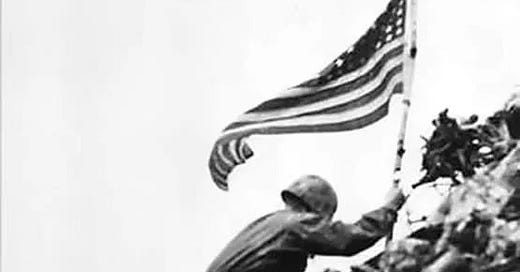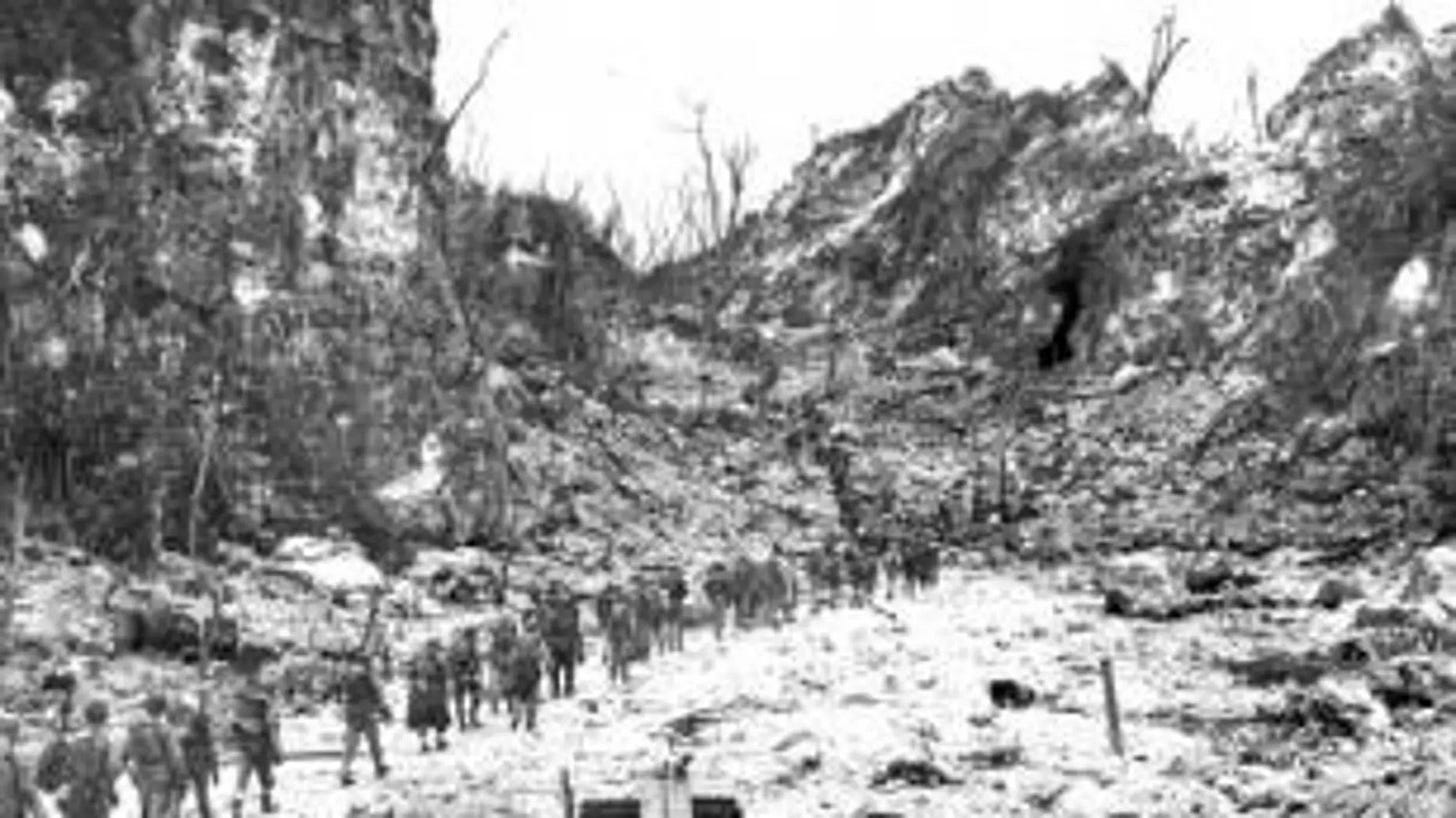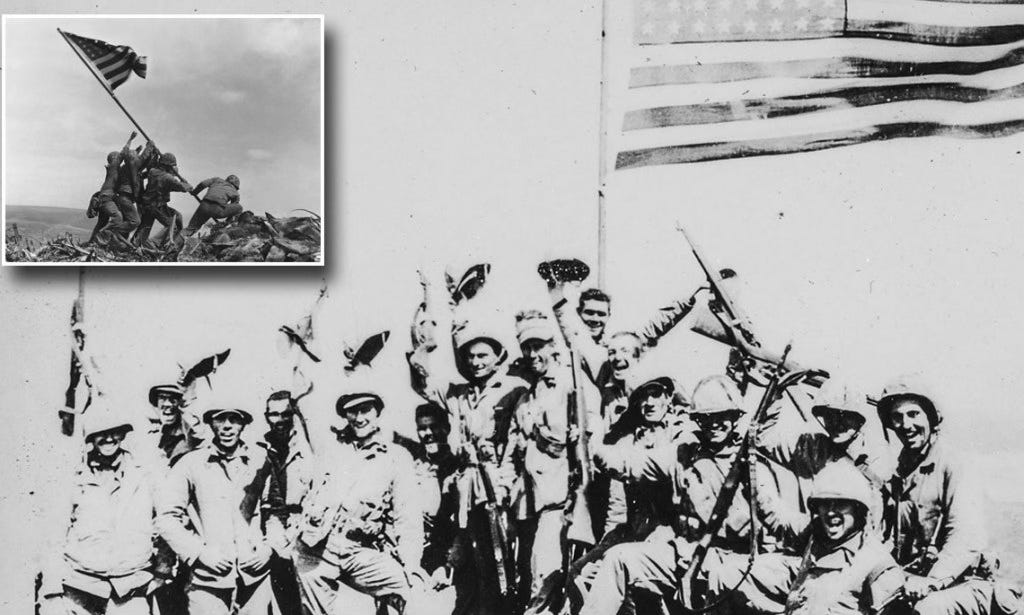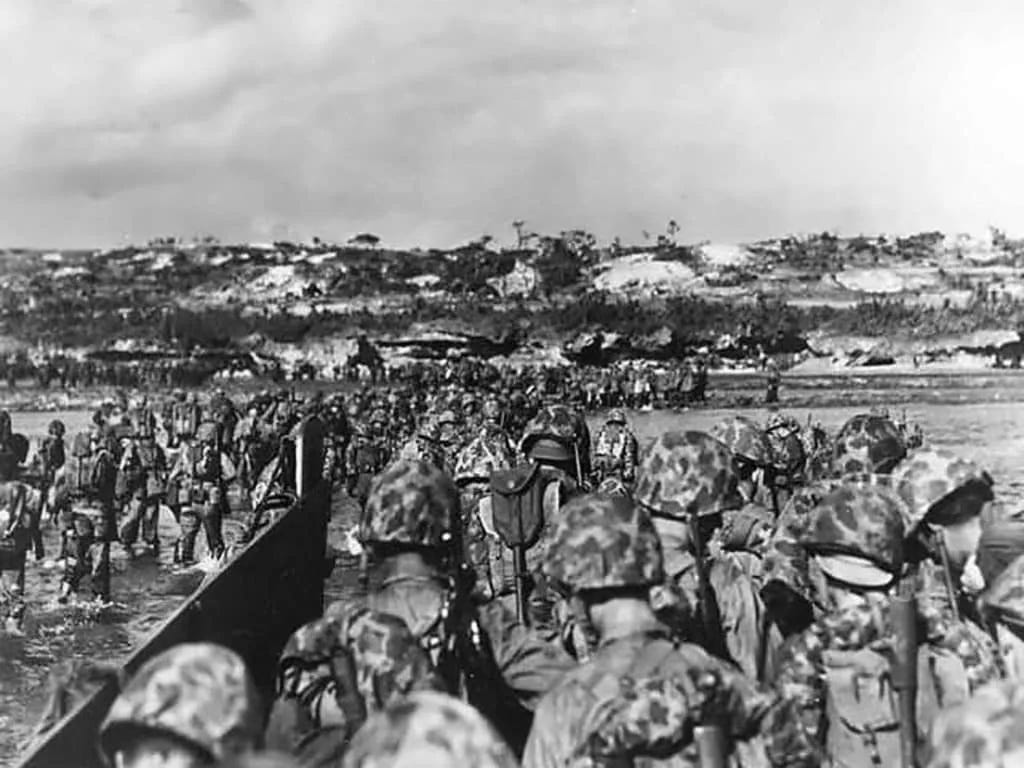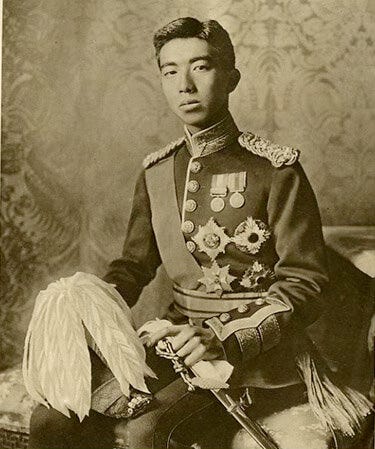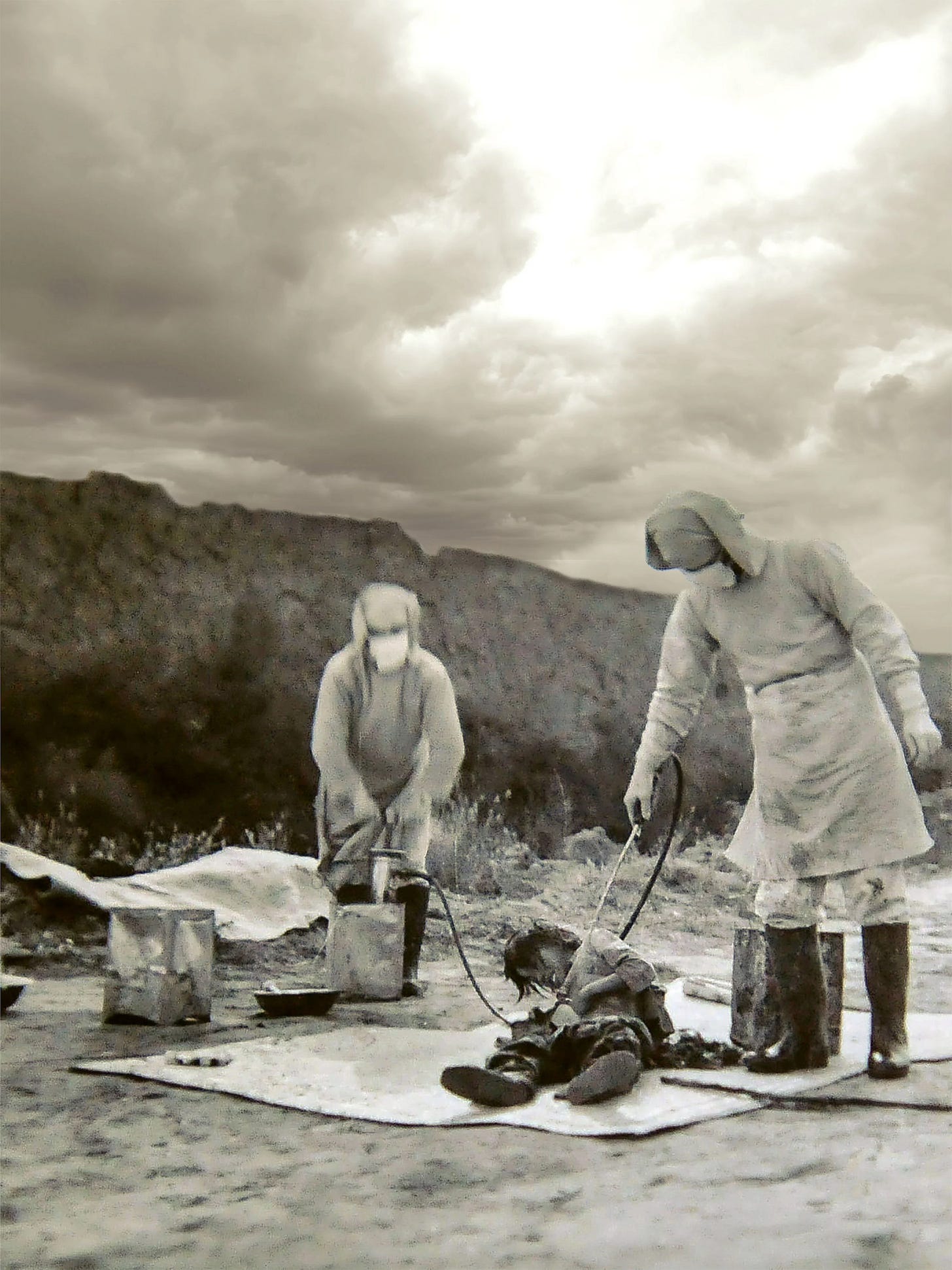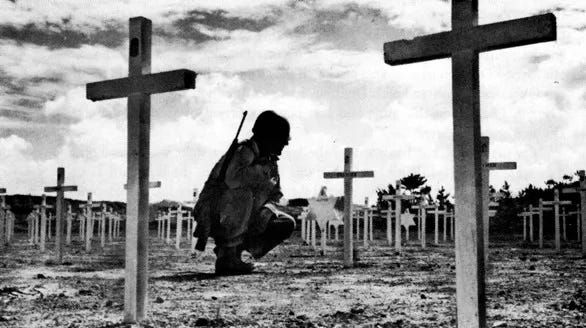In the grand narrative of World War II, the Pacific Theater is often overshadowed by the European front. The Normandy landings, the fall of Berlin, and Hitler’s atrocities dominate public consciousness. Yet, the Pacific War was a brutal, grinding campaign that shaped the world just as much—if not more—than the battles in Europe.
For many – including myself last year, a bit! – the story begins and ends with Pearl Harbor and the atomic bombs, and, oh, there was a flag raised on Iwo Jima in between. But that version leaves out the staggering cost of island warfare, the complexities of Japan’s surrender, and the full scale of destruction that unfolded in the Pacific.
Today, we dig into the lesser-known, but equally crucial, truths of Guam, Peleliu, Iwo Jima, and Okinawa—along with the broader context that shaped the world’s postwar order.
⸻
Guam: The First and the Forgotten
Guam, a U.S. territory, was one of the first places to fall after Pearl Harbor, occupied by Japan for nearly three years before its liberation in 1944. The Chamorro people, the indigenous inhabitants of Guam, suffered enormously under Japanese rule—many were executed, forced into labor, or subjected to horrific conditions. When U.S. forces retook the island, they faced an enemy determined to fight to the death, with over 18,000 Japanese soldiers killed compared to 1,700 American deaths.
But beyond its strategic importance, Guam served as a symbol of what the war was about for Americans—it wasn’t just about defeating an enemy but reclaiming and protecting the lives of people under its flag. Guam remains a key military stronghold for the U.S. in the Pacific to this day, an overlooked but vital legacy of WWII.
⸻
Peleliu: A Battle That Shouldn’t Have Happened?
In September 1944, the U.S. launched an attack on the tiny island of Peleliu, expecting to secure it in a few days. Instead, the battle dragged on for over two months, with U.S. Marines suffering a shocking 40% casualty rate. There were more than 10,000 U.S. casualties and some have debated that the battle wasn’t as strategically important as believed to be at the time. By the time the island was secured, it’s supposed use as an airfield for the invasion of the Philippines was largely unnecessary.
But was it truly pointless?
It forced Japan to commit critical resources. The Japanese 14th Division, one of their most experienced units, was drawn into Peleliu instead of reinforcing Iwo Jima or Okinawa.
It exposed Japan’s new defensive tactics. Before Peleliu, the Japanese relied on banzai charges. At Peleliu, they switched to deep fortifications, tunnels, and hidden bunkers—a strategy they perfected on Iwo Jima and Okinawa. By fighting this first on Peleliu, the U.S. was better prepared for the brutal fights ahead.
It secured the southern flank for the invasion of the Philippines. While controversial, Peleliu ensured that Japan couldn’t disrupt MacArthur’s offensive to retake the Philippines—a campaign that cut off Japan from its vital resources in Southeast Asia.
The lesson? Even unnecessary battles in war come with consequences that ripple across history.
⸻
Iwo Jima: The Most Famous Photo—and the Reality Behind It
Iwo Jima is often remembered for the iconic flag-raising on Mount Suribachi, immortalized in the most famous war photograph ever taken. But the reality of Iwo Jima was even more harrowing than most realize.
The only battle where U.S. casualties outnumbered Japanese casualties. Nearly 7,000 Marines were killed, and over 19,000 were wounded.
Of the 21,000 Japanese defenders, only a few hundred were taken alive—nearly every soldier chose death over surrender.
Iwo Jima was the first and only battle where the United States suffered more total casualties than the enemy and still pressed forward.
Despite the horrors, securing Iwo Jima was critical—it became a crucial emergency landing site for more than 2,400 damaged U.S. bombers, likely saving the lives of tens of thousands of airmen who would have otherwise crashed into the sea.
⸻
Okinawa: The Forgotten D-Day
If D-Day is seen as the turning point in Europe, Okinawa was its Pacific counterpart—except with far higher stakes and casualties. The battle lasted 82 days, making it one of the longest and bloodiest battles in the entire war.
The largest amphibious assault in the Pacific. Over 180,000 U.S. troops landed on the island.
Kamikaze attacks reached their peak. Nearly 2,000 suicide planes were launched at the U.S. fleet, sinking 36 ships and damaging hundreds more.
The civilian toll was staggering. Over 100,000 Okinawans—men, women, and children—were killed, many by forced mass suicides encouraged by Japanese propaganda that warned civilians the Americans would torture them.
Okinawa wasn’t just a battle—it was a preview of what an invasion of the Japanese mainland would look like. And that leads to one of the most misunderstood aspects of the Pacific War:
⸻
The Emperor Refused to Surrender—Even After the Atomic Bombs
A common misconception is that Japan surrendered after the atomic bombs. But even after Hiroshima and Nagasaki were destroyed, Emperor Hirohito — thought to be a literal God — and Japan’s military leaders still refused to surrender. Instead, they launched Operation Ketsugo, a plan to mobilize nearly every Japanese civilian—men, women, and children—as fighters in a last-ditch defense of the homeland.
Japan’s war cabinet was deadlocked on surrender. It took two major events to finally push them over the edge:
The Soviet Union invaded Japan. On August 9, 1945, the same day Nagasaki was bombed, the USSR launched a massive invasion into Japanese-occupied Manchuria. This shattered Japan’s hope of negotiating a peace deal with the Soviets and terrified the leadership, as they feared communism more than they feared America.
Emperor Hirohito personally intervened. Japan’s leadership still couldn’t agree, even after two nuclear bombs, fire bombings, they were at war for more than a decade already, and a Soviet invasion. It was only when Emperor Hirohito himself stepped in and forced a decision that Japan finally surrendered on August 15, 1945.
In a bonkers sign of how disconnected Japan’s leadership was from reality, they had attempted “shuttle diplomacy” with the Soviets in hopes of negotiating a conditional surrender that would let them keep power—even as the Soviets were preparing to invade. Stalin, of course, had no interest in helping Japan.
⸻
Unit 731: The Pacific’s Version of Nazi Concentration Camps
While Nazi Germany’s crimes against humanity are well-known, Imperial Japan’s brutality often receives far less attention. Nowhere is that clearer than with Unit 731, Japan’s secret biological warfare program that makes even Nazi experimentation look tame.
Thousands of Chinese, Korean, and Allied POWs were subjected to horrifying experiments.
Live human vivisections (dissections with no anesthesia) were routine.
Prisoners were deliberately infected with diseases like bubonic plague, anthrax, and cholera to study their effects.
Some were tied to stakes and used for grenade and flamethrower testing.
The unit even tested plague-infested fleas on Chinese villages, leading to hundreds of thousands of civilian deaths.
⸻
The Lessons We Must Carry Forward
The Pacific War wasn’t just military history—it was a battle for civilization itself. Idioms like “Freedom isn’t Free” doesn’t convey the point. The sheer scale of suffering, the moral dilemmas, the drastically different worldviews about human dignity and human freedom, and the decisions made in those final moments by individual soldiers, citizens at home, and leaders in command shaped the modern world.
Today, as we remember battles like Guam, Peleliu, Iwo Jima, and Okinawa, we must also remember the cost of forgetting history. The men who fought in these battles are nearly all gone. Their stories, their sacrifices, and their lessons must not fade with them.
If we are to honor them, we must do more than just remember—we must understand… and engage.


